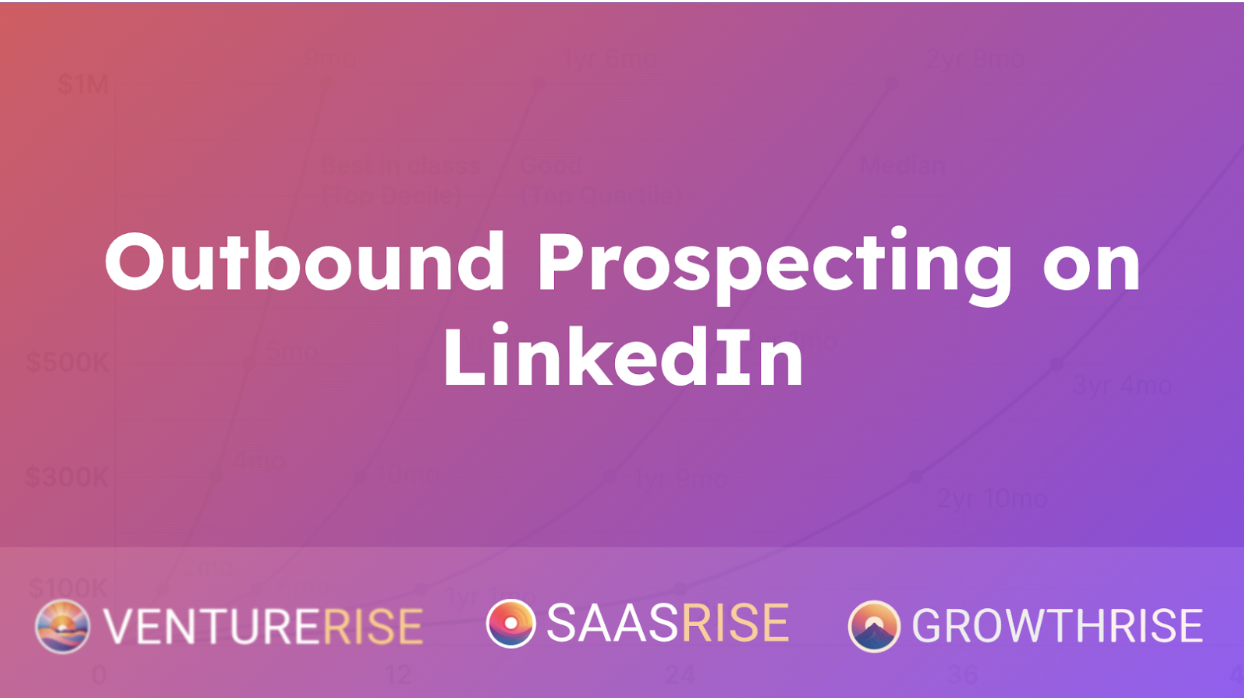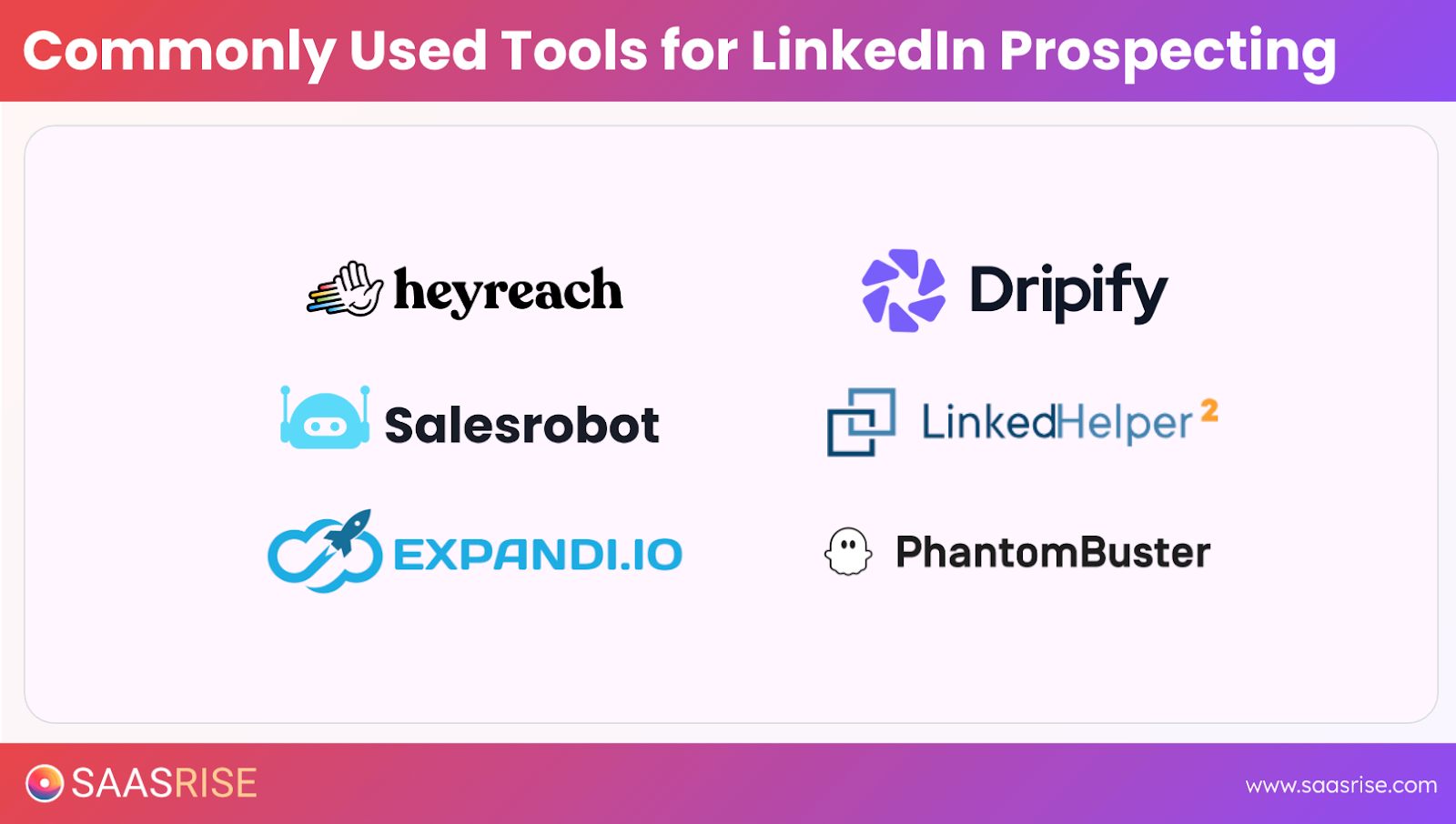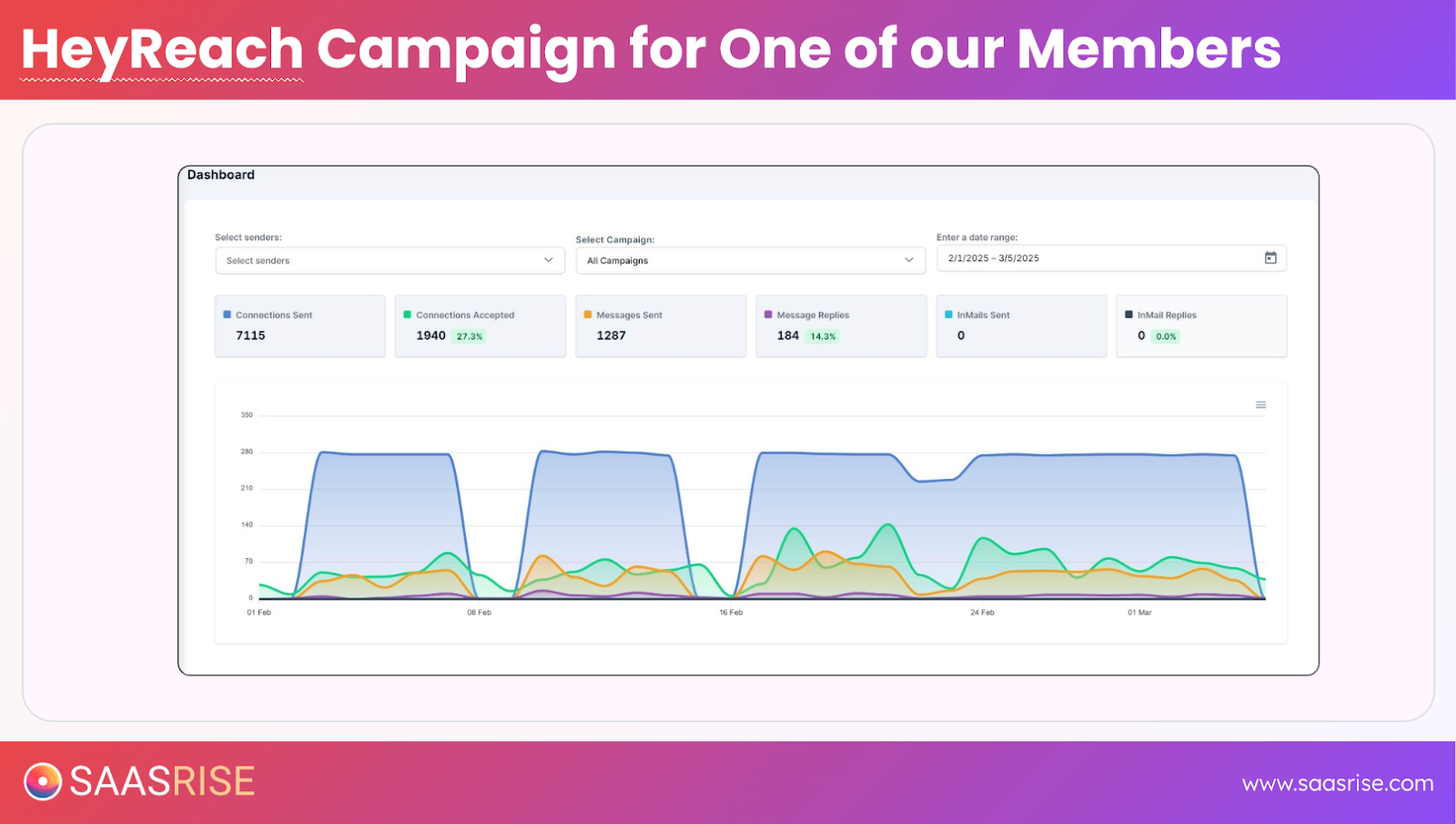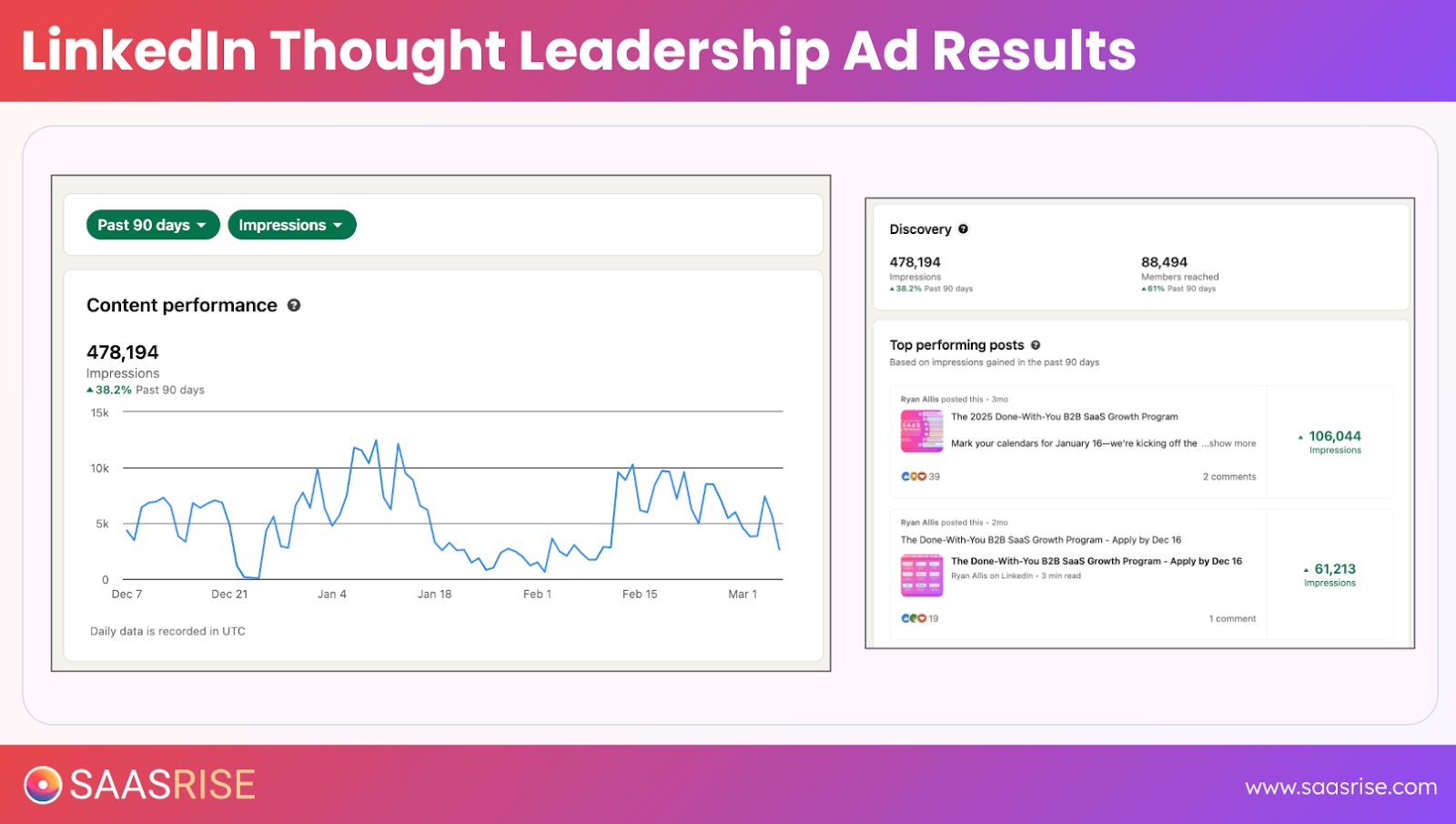
How to Use LinkedIn for Outbound Prospecting: Building Relationships at Scale
Outbound email can get you attention. Ads can create awareness. But LinkedIn is where relationships begin — and where prospects start to trust your brand.
In B2B marketing, one channel rarely wins on its own.
If you’re building a modern B2B growth engine, LinkedIn isn’t optional anymore. It’s where your audience is scrolling, posting, commenting, and deciding who they want to do business with.
So let’s break down exactly how to use LinkedIn for outbound prospecting — from automated connection requests to intent-driven messaging — and how to make it part of your larger ABM system that keeps your brand top of mind.
This content is from the 16 week B2B SaaS Growth Program that we run twice a year.
Why LinkedIn Prospecting Works
LinkedIn has evolved from a resume site into the largest B2B engagement platform in the world. Every founder, executive, and decision-maker in your target market is there — checking updates, reading posts, and replying to messages.
And yet, most companies barely tap into its potential.
Here’s why it matters:
- High intent: LinkedIn users are in a professional mindset — they expect to connect, learn, and explore business opportunities.
- Accurate data: Job titles, roles, and industries stay current because people update them constantly.
- Direct access: You can reach buyers directly without going through gatekeepers.
When combined with outbound email and targeted ads, LinkedIn becomes the human touchpoint that builds familiarity and trust — the secret to turning cold leads into warm conversations.

The Role of LinkedIn in Your ABM System
Outbound email gets you visibility. LinkedIn converts that visibility into relationships.
Your ABM lead list is the foundation. Once your cold emails start going out, you’ll want to:
- Target those same people on LinkedIn.
- Send personalized connection requests.
- Follow up with authentic, value-based messages.
Think of it like a funnel:
- Cold email opens → LinkedIn connection requests → Automated follow-ups → Warm conversations → Demo or trial.
That’s how you transform attention into engagement — and engagement into pipeline.
Step 1: Start With Your ABM List
Everything begins with your ABM list.
By now, you should have a database of verified contacts — job titles, companies, and LinkedIn URLs — built through tools like Apollo, LinkedIn Sales Navigator, and Clay.
Now it’s time to sync that data with LinkedIn automation tools that help you reach those people directly.
You can do this through:
- Manual CSV uploads of the people who clicked or replied to your emails.
- Or via Zapier or webhook automation that automatically sends those engaged leads to your LinkedIn outreach tool every week.
Step 2: Automate Outreach Without Losing the Human Touch
Here’s the truth: manually sending hundreds of connection requests each week isn’t scalable. But automation doesn’t have to feel robotic.
Tools like HeyReach, Dripify, and LinkedHelper let you automate outreach in a way that still feels personal.

These platforms allow you to:
- Connect your real LinkedIn profile (never use fake ones — they’ll get shut down).
- Upload your ABM leads or synced engaged contacts.
- Send up to 100 connection requests per week per LinkedIn account.
- Set up automated messaging sequences once the connection is accepted.
If your team has five people, you can scale that to 500 personalized connection requests per week simply by connecting their accounts.
And the best part? Most of your team will be happy to do it — it helps them grow their own network and visibility within your target market.
Step 3: Use AI to Personalize Your Outreach
Automation is powerful, but only when it feels human. That’s where AI personalization comes in.
You can now take the same AI personalization strategy you’ve used for cold email — using tools like Instantly or Clay — and apply it to your LinkedIn messages.
Example Prompt
“Write a one-sentence LinkedIn connection note that references the recipient’s background or company, based on their LinkedIn profile. Keep it under 25 words and sound authentic.”
Output examples:
- “Loved your post about customer retention — always a challenge in SaaS!”
- “Big fan of how you scaled your fintech platform while keeping it customer-focused.”
These short, specific messages perform better than generic connection requests or templated outreach.
Step 4: Sequence Your LinkedIn Messages
Once a connection is accepted, don’t pitch immediately. The goal is to build a relationship, not to sell in the first message.
A simple three-message sequence works best:
Message 1: Thank + Value
“Thanks for connecting, [Name]! I loved your perspective on [topic]. If you’re interested, I recently shared a quick guide on [problem your product solves]. Want me to send it over?”
Message 2: Case Study or Insight
A few days later, share something genuinely useful — a customer story, report, or data-backed takeaway that helps them do their job better.
Message 3: Soft CTA
“Curious — are you currently exploring solutions around [problem area]? Happy to share what’s worked for similar teams if helpful.”
Keep it short, warm, and conversational. If they reply, stop the automation and respond manually.
Step 5: Measure What Works
LinkedIn gives you better response rates than email — often 10–20% compared to 2–4% via cold email.
But it’s not about vanity metrics. You’re tracking for:
- Connection acceptance rate: 20–50% depending on title and personalization.
- Message reply rate: 10–20% on average.
- Positive engagement: How many leads move from conversation to next step (call, demo, or trial).
Your highest acceptance rates usually come from profiles with authority — founders, CEOs, and VPs. That’s why it’s smart to send connection requests from senior team members rather than SDRs.
Step 6: Expand Your Reach With Thought Leader Ads
Once your outbound and LinkedIn outreach are running, you can amplify your visibility with thought leader ads.

These are boosted versions of your personal LinkedIn posts that show up as sponsored content to your ABM audience.
Why they work:
- They look organic, not promotional.
- They’re cheaper than traditional LinkedIn ads (around $15 CPM vs. $200+).
- They build brand credibility through your personal voice.
You can boost your posts manually or upload your ABM list to LinkedIn Ads Manager as a matched audience. Then, run your personal content as ads targeted to those exact companies and roles.
When your prospects see your name in their inbox, feed, and ads, it creates familiarity — and familiarity converts.
Step 7: Go Beyond Automation — Add Intent Data
If you want to level up your outbound even further, consider adding intent signals to your strategy.
Tools like Amplemarket are built for this.
Instead of reaching out to everyone on your list, you can target only the people who are actively showing interest in your space.
How It Works
Amplemarket monitors activity across LinkedIn and other channels to identify leads who:
- Follow your company or a competitor’s page.
- Engage with posts about your industry.
- Join relevant Slack communities or comment on product reviews.
- Change jobs or post about a relevant topic.
Then, it automatically reaches out to them through email and LinkedIn with custom sequences.
This is how you find high-intent buyers — the 5% of your total market who are already searching for a solution like yours.
It’s more expensive than standard tools (around $600/month), but if your ACV is above $7K–10K, it pays for itself with one deal.
Step 8: Combine Channels for True Omnipresence
The companies that dominate their category don’t rely on one channel. They use all of them — in sync.
Here’s what that looks like in practice:
- Outbound Email: Reach your ABM list with personalized cold emails.
- LinkedIn Automation: Send connection requests and follow-ups to people who engage.
- Retargeting Ads: Show ads to everyone who clicks on your emails or visits your site.
- Thought Leader Ads: Boost your personal posts to your audience.
- Warm Nurture: Keep engaged prospects on your weekly newsletter and in your CRM.
The goal is to make your brand omnipresent within your ICP — visible across channels and always providing value.
When prospects see your name in their inbox, on LinkedIn, and in their ads week after week, they start to trust you long before you ever get on a call.
Step 9: Build Systems, Not Campaigns
Outbound and LinkedIn prospecting work when you treat them as systems, not one-time projects.
That means:
- Weekly connection requests.
- Ongoing message optimization.
- Consistent posting and content promotion.
- Regular list refreshes to keep your ABM data clean.
The more consistent your system, the more your brand compounds in visibility, trust, and inbound volume.
Step 10: Keep It Human
Automation doesn’t replace authenticity. It amplifies it.
Every automated message still needs to sound like a real person reaching out with genuine curiosity and value.
The best marketers don’t chase clicks — they build connections.
So use the tech, but keep the heart. AI and automation can scale your reach, but empathy and expertise are what convert it into relationships that drive revenue.
The Takeaway
LinkedIn prospecting isn’t about hacks or bots — it’s about strategic consistency.
When you combine outbound email, LinkedIn automation, and smart content distribution, you create a marketing engine that surrounds your audience with value everywhere they go.
Start small. Build momentum. Keep showing up.
Because when your audience sees you in their inbox, on LinkedIn, and in their feed every week, you’re not a stranger anymore — you’re the brand they remember when it’s time to buy.
This content is from the 16 week B2B SaaS Growth Program that we run twice a year.

